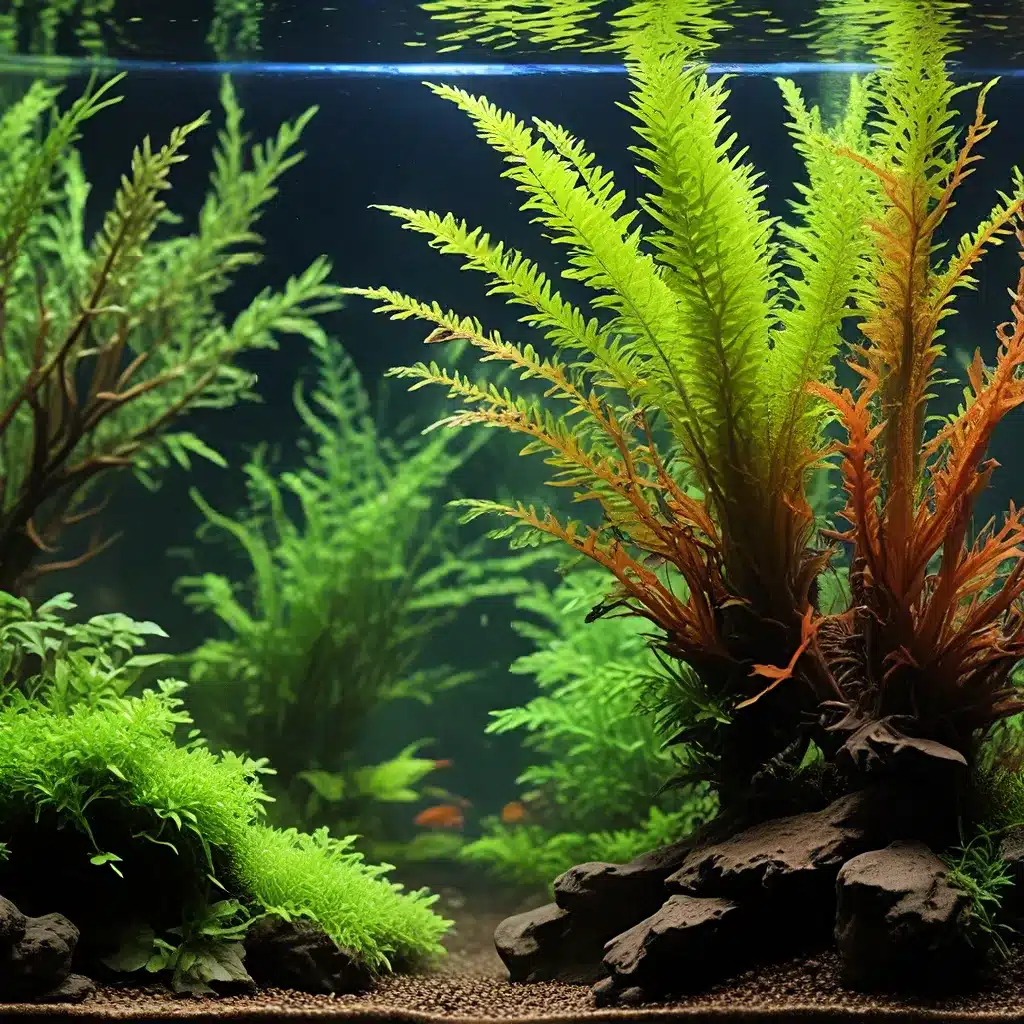
The Delicate Balance of an Aquatic Ecosystem
Maintaining a thriving aquarium is akin to nurturing a miniature underwater garden. Just as a lush, well-designed terrestrial landscape requires careful attention to the symbiotic relationships between its various elements, the same principle applies to the aquatic world. Aquarium enthusiasts must understand the complex interplay between aquatic plants, fish, and the surrounding environment to create a truly captivating and self-sustaining aquatic ecosystem.
At the heart of a successful aquarium lies the delicate symbiosis between the plants and other inhabitants. Just as certain plants thrive in specific soil conditions and sun exposure on land, aquatic plants have unique water chemistry, lighting, and nutrient requirements to flourish underwater. By understanding these species-specific needs and fostering beneficial relationships, aquarists can unlock the true potential of their aquarium.
Selecting Complementary Aquatic Plants
The first step in cultivating a harmonious aquarium is to choose a thoughtful combination of aquatic plants that will work in harmony with one another and the other inhabitants of the tank. Different plant species have varying growth habits, light requirements, and nutrient preferences, so it’s essential to research and select plants that will coexist peacefully.
For example, fast-growing stem plants like Hygrophila and Rotala may outcompete slower-growing rosette plants like Echinodorus and Cryptocoryne if not carefully managed. Similarly, floating plants like Salvinia and Frogbit can provide valuable shade and oxygen production, but they may also block essential light from reaching the lower-growing carpet plants like Dwarf Hairgrass and Lilaeopsis.
By understanding the unique characteristics of different aquatic plants, aquarists can create visually stunning and harmonious aquascapes that promote the overall health and balance of the ecosystem. Carefully selecting and arranging aquatic plants is the foundation for a thriving aquarium.
Optimizing Water Parameters
Once the aquarium’s plant life has been thoughtfully curated, the next crucial step is to ensure that the water parameters are precisely tailored to support the specific needs of the chosen plant species. Things like pH, temperature, and nutrient levels must be meticulously monitored and adjusted to create the ideal growth conditions.
For instance, some plants like Anubias and Java Fern prefer slightly acidic water, while others like Vallisneria and Sagittaria thrive in more neutral pH ranges. Likewise, high-tech aquariums that utilize advanced lighting and carbon dioxide injection systems may require different nutrient dosing regimens compared to low-tech setups relying on natural light and less intensive equipment.
By diligently maintaining optimal water parameters, aquarists can foster a harmonious and symbiotic relationship between the plants, fish, and other aquarium inhabitants. This not only promotes the health and longevity of the ecosystem but also enhances the visual appeal of the aquascape.
Harnessing the Power of Symbiosis
Beyond just selecting the right plants and maintaining ideal water conditions, experienced aquarists understand the importance of leveraging the symbiotic relationships that naturally occur in a thriving aquarium. By encouraging these beneficial interactions, aquarists can create a self-sustaining ecosystem that requires minimal intervention.
One prime example of this is the symbiosis between aquatic plants and fish waste. As fish swim and feed, they produce waste that contains valuable nutrients like nitrogen, phosphorus, and potassium. Aquatic plants, in turn, can absorb these nutrients and use them to fuel their own growth and vitality. This symbiotic cycle not only keeps the water clean and clear but also reduces the need for frequent water changes and supplemental fertilization.
Similarly, the presence of certain algae-eating fish like Otocinclus and Crossocheilus can help control unwanted algae growth, which can outcompete desirable plant species. By maintaining a carefully balanced community of plants, fish, and other aquarium inhabitants, aquarists can create a harmonious and self-regulating ecosystem that requires less hands-on maintenance.
Embracing the Beauty of Aquarium Symbiosis
Ultimately, the true beauty and satisfaction of aquarium keeping lie in the delicate balance and symbiotic relationships that develop within the confines of a carefully curated underwater landscape. By understanding the unique needs of aquatic plants, optimizing water parameters, and harnessing the power of natural symbiosis, aquarists can create vibrant, low-maintenance aquariums that captivate the senses and inspire a deep appreciation for the intricate workings of the aquatic world.
Whether you’re a seasoned aquarium enthusiast or a newcomer to the hobby, embracing the principles of aquatic plant symbiosis can unlock a world of possibilities for your underwater oasis. By fostering these beneficial relationships, you’ll not only cultivate a thriving aquarium but also deepen your own connection to the natural wonders that exist beneath the surface.

